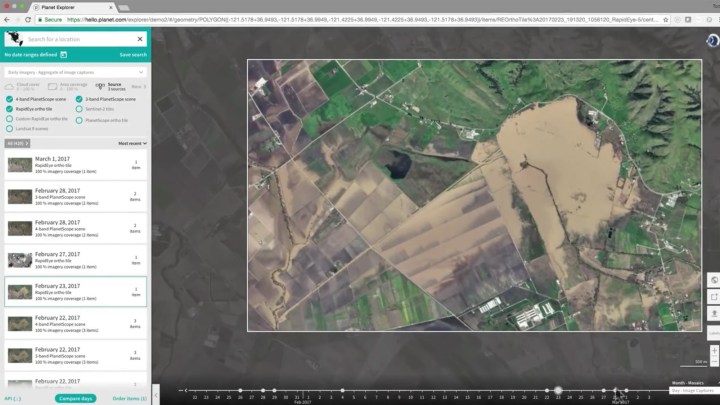
Planet Labs recently purchased the Terra Bella satellite network from Google and now operates more satellites than any other organization in human history, making it a perfect candidate for mapping the world through satellite imagery. In terms of bringing those images to the public, though, it lags behind other ventures like Google Earth but by adding a time tool to its Planet Explorer, it’s certainly catching up.
With the new Planet Explorer beta, users can see changes across the globe month by month. They can zoom in on individual countries, states, and cities, seeing how 2016 changed them all.
Each global map is composed of more than 2 million satellite images, automatically processed and stitched together. Because the technology to put these together is still being refined, Planet Labs admits that there are some color anomalies as well as some tiling in a few of the images due to insufficient data at that point in time.
As it stands, Planet Labs’ images are accurate to around three to five meters per pixel, though that is likely to improve in the future as its satellite network expands even further with new imaging capabilities.
If you would like to have a play with the tool yourself, all you need do is head to the Planet Explorer beta page and start clicking around. You can gain access to the past year’s worth of imagery from Planet Labs, as well as its time-travel tool. If you go a step further and create an account, you can look at images from day to day, giving you much greater accuracy.
Planet Labs hopes its new imaging tool will help humanitarian efforts, as well as new commercial partnerships and help consumers around the world have a better understanding of planetary imagery and how useful it can be.



